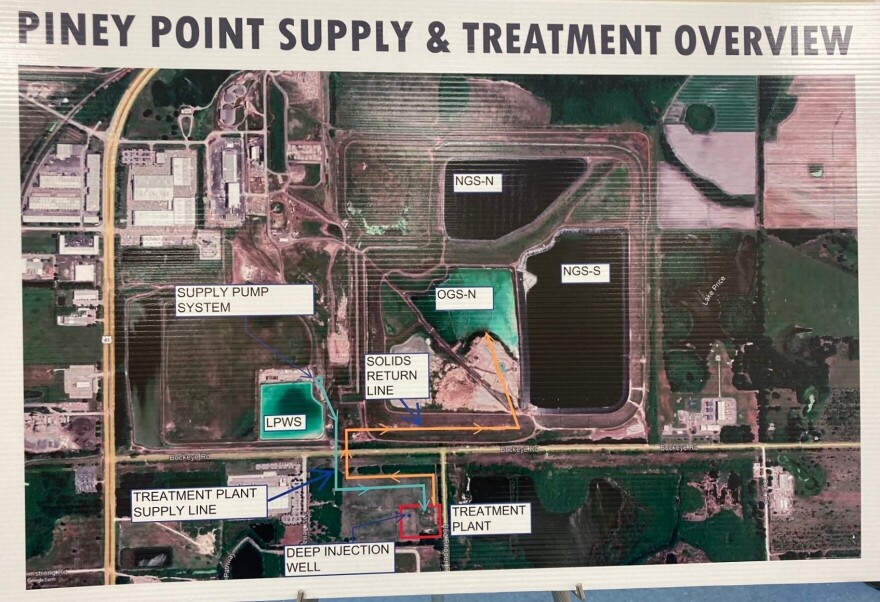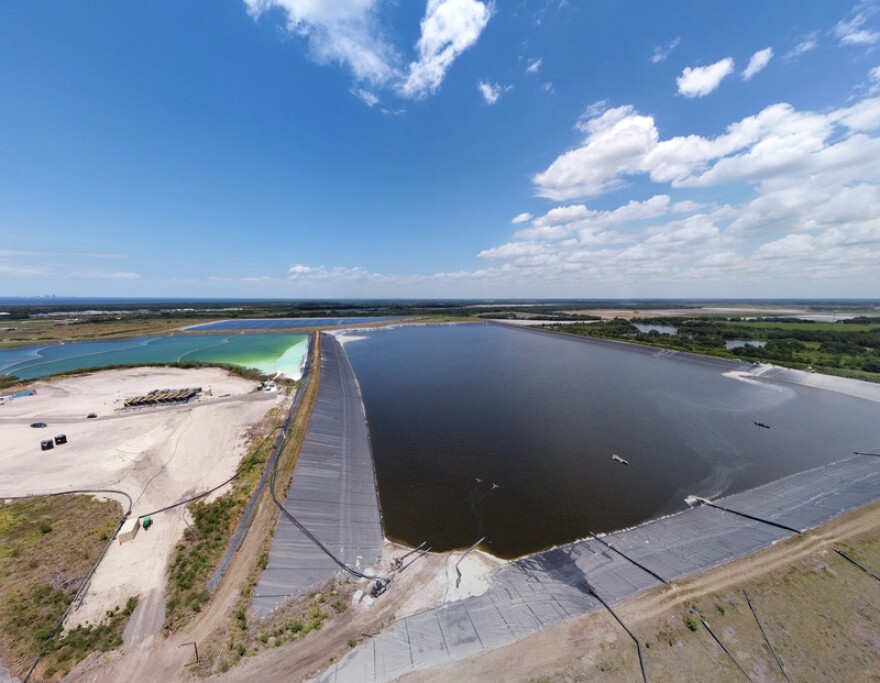State environmental regulators recently said they intend to allow polluted water from the Piney Point phosphate plant in Manatee County to be pumped deep below the surface.
But not everyone is on board with this decision.
The move comes after more than 200 million gallons of dirty water were allowed to flow into Tampa Bay earlier this year, after a breach was found in the plant's gypsum stack.
Up to 4 million gallons a day of wastewater would be injected nearly 2,000 feet below the drinking water aquifer. Local and state environmental officials say this is the best solution to getting rid of the water, which is still in danger of bursting the earthen walls of the stack.
Jaclyn Lopez, Florida director of the environmental group Center for Biological Diversity, is concerned that state officials have downplayed the threat of underground contamination.
"We have material from a phosphogypsum stack that is radioactive," Lopez said. "It's corrosive, it is toxic in that the material itself — we know that phosphogypsum has lead, cadmium, chromium and other things to be concerned about."
Lopez said the state banned deep-well injection of hazardous waste decades ago. But state regulators are saying the water does not contain hazardous waste.
"And so this is exactly the type of material that 40 years ago, our state lawmakers determined would be inappropriate to deep-well inject," she said. "And I'm not persuaded by any information that's come forward to date regarding Piney Point that we're in any different situation that would protect us from those harms through a deep-well injection."
The Center for Biological Diversity is a member of a coalition of environmental groups that said in September they will sue Manatee County over its deep-well injection plans.
The deadline for anyone interested in challenging the permit is Dec. 14.

As of Friday, 252 million gallons were held within the problem pond atop the gypsum stack, according to the DEP. But during an October interview, Manatee County Administrator Scott Hopes said the plan is to draw down all three ponds held within the gypsum stack. That totals to more than 600 million gallons, he said.
Hopes said the project could begin as early as June.
Here's part of a fact sheet released by the Florida Department of Environmental Protection:
Will the Hazardous Waste Containment Ponds aka Gypsum Stacks, Clay Setting Ponds, Decantment Ponds, Stormwater Sediment/Pollutants Ponds or Retention Ponds be directly connected to the DWI by a conduit system?
No, as explained above, the phosphogypsum stack system does not contain hazardous waste. The deep injection well will not be directly connected to storage ponds or other sources of water from the Piney Point site. Rather, the applicant has proposed that water from the site would be transferred from the site (generally via a dedicated pipeline), treated as needed by the applicant for the proper operation of the underground injection control well, then routed through filtration processes, and then injected in a controlled manner in compliance with the proposer permit requirements to ensure protection of Florida’s ground water resources. The injection zone is approximately 1,000 ft. below the underground source of drinking water. The Avon Park Formation is expected to provide confinement between the Upper Floridan Aquifer and the Lower Floridan Aquifer between approximately 900 feet below land surface (bls) and the bottom of the well casing at 1,950 feet bls. The Middle Confining Unit II is present and located from approximately 1,550 – 1,900 bls and is almost 400 ft thick.
Can a Class I non-hazardous injection well be used for disposal of hazardous waste?
No, it cannot. The proposed well and draft permit would only allow the injection of non-hazardous wastewater as described in the permit application. Further, Florida law at this time does not allow the disposal of hazardous waste into an injection well, in accordance with the provisions of s. 403.7222, Fla. Stat., and the Rule 62-528.400, Fla. Admin. Code.





